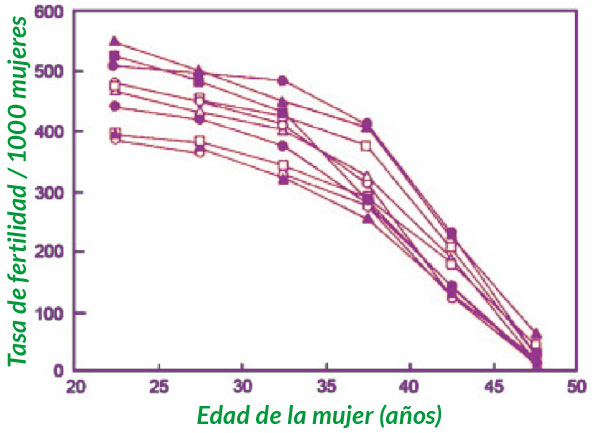Age and fertility
One of the basic processes for fertility is the fertilization of the gametes (interaction of the female gamete “ovum” and the male gamete “sperm”), which takes place in the fallopian tubes (ducts) that connect the ovary with the uterus Fig.1.
Today’s life has led us to postpone the process of seeking a pregnancy more and more. Due to various situations in both women and men, it is a fact that currently many women prefer professional and personal development, and once they have achieved their goals, then they do seek pregnancy.
It has been shown that the possibility of pregnancy decreases with the age of the woman.
This decrease has an impact from the age of 35 and increases as time progresses. In Graph.1 we show the number of pregnancies per thousand women from 20 years of age onwards. It can be observed that after the age of 35, fecundability (possibility of pregnancy for each ovulation cycle) is reduced by almost half compared to women of 20 years of age and the decrease becomes more noticeable and drastic after 40 years of age. .
Los tratamientos de reproducción asistida han evolucionado de manera vertiginosa de 10 años a la fecha, teniendo estudios previos y análisis clínicos, como técnicas avanzadas durante el proceso de in-vitro para mejorar la expectativa de embarazo y el pronóstico reproductivo de las parejas.
It’s something natural
Bear in mind that a woman with good physical-mental and organic health is not necessarily related to good reproductive health, since the greatest impact of age is on the reserve of eggs in the ovary, as well as the deterioration in the DNA of the information of these.


